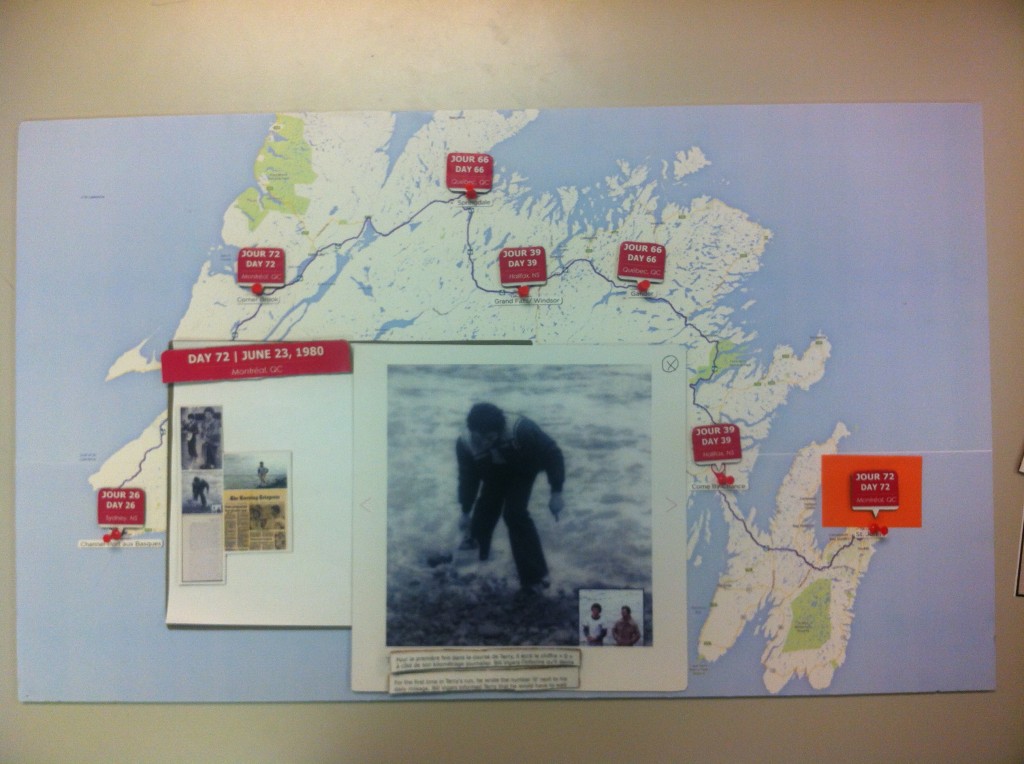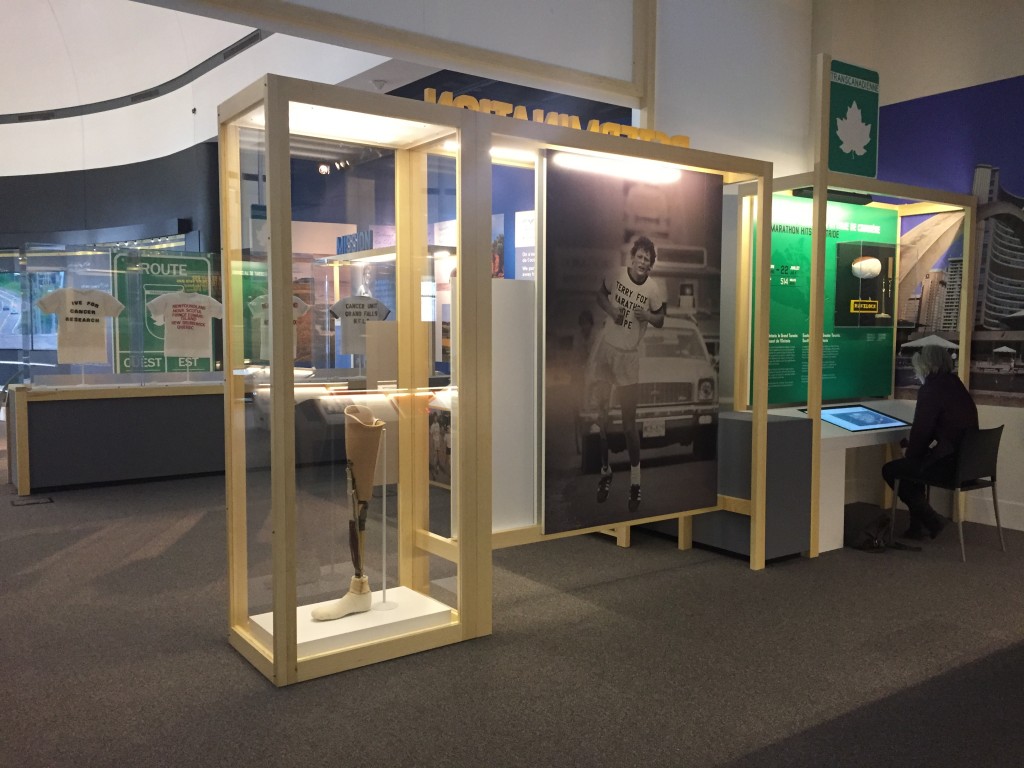From idea to experience: one example from the Terry Fox exhibition
When working on Museum exhibitions, one of my greatest pleasures has been seeing the evolution of an idea from the initial concept to a design on paper to a built product to the visitors interacting with the final exhibition.
As a Creative Development Specialist, my job is to envision how visitors will be engaged by an exhibition, which is part of what we call in the museum field the “visitor experience.” The process of developing the visitor experience and, especially, the outcome of visitors enjoying an exhibition are very rewarding for me.
One goal for the Terry Fox – Running to the Heart of Canada exhibition team was to share with visitors Terry Fox’s route during his Marathon of Hope in 1980. The 143 days of the run were filled with challenges and rewards, high points and low points. The records we had of these experiences included photographs, newspaper clippings and video footage, and interviews with Terry. We imagined that if we could “pin” these items to Terry’s route on a map of Canada, visitors could better appreciate the 3,339 miles (5,373 kilometres) he ran. We wanted visitors to feel as if they were experiencing the Marathon of Hope while it unfolded, watching the growing excitement of Canadians as Terry ran from the Maritimes, through Quebec and into Ontario in the summer of 1980.

An early design concept for representing archival material on Terry’s route across Canada.
To achieve these objectives, the team started in a very low-tech fashion, working with paper, scissors and pushpins to figure out how much of the story we could tell with maps. We made simple mock-ups and designs along the way. These helped us to refine our ideas and to share them with colleagues. Our designs evolved as we sought our colleagues’ expertise on archival content, writing, design and programming.
Now, these rough concepts have been transformed into an elegant exhibition, where visitors can explore Marathon of Hope events along Terry’s route on five interactive touchscreen maps. I am enjoying the opportunity to see visitors discover the stories contained in these interactive maps.

A push-pin design concept for representing archival material on Terry’s route across Canada.
As my work on the exhibition wraps up and I tidy my files, I found photographs of the mock-ups and sketches of maps we made at the start of process. It is so much fun for me to compare the “before and after,” and see how our ideas progressed. I am happy to note that, even though our mock-ups were pretty rough at the outset, the core of our idea was there all along.

Photo of the interactive touchscreen map that visitors can use to explore Marathon of Hope events along Terry’s route.
In the exhibition, discovering Terry Fox’s route on these interactive maps is just part of the visitor experience. Visitors also see some very personal items that belonged to Terry: his prosthetic legs, handwritten journal, T-shirts and running shorts. These artifacts are profoundly moving because they are so intimate. They also help us show how special aspects of Terry’s character made it possible for him to plan and carry out the run, especially his vision, his determination, his integrity and his courage. This mix of artifacts, images, maps and stories all work together to bring visitors closer to Terry Fox, his achievements during the Marathon of Hope and what he means to Canadians.

A visitor explores the Marathon of Hope events using an interactive touchscreen map in the exhibition Terry Fox – Running to the Heart of Canada.